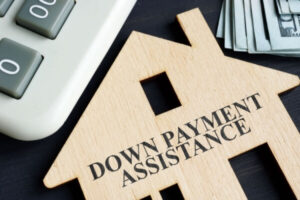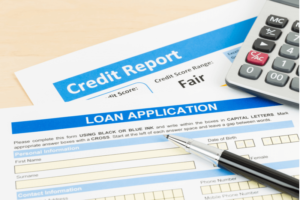Buying a house is a significant life goal and milestone for Pennsylvania families. That’s why, in 1972, the Pennsylvania Housing Finance Agency (PHFA) was established to help families cover the mounting costs of homeownership.
The average Pennsylvania home value in 2024 is $272,477, up 5.3% over the past year, with the metro areas of Philadelphia and Pittsburgh experiencing higher demand and prices compared to rural areas.
Here’s a look at the 10 counties with the highest median home prices in Pennsylvania:
- Chester County: $475,230
- Bucks County: $447,000
- Montgomery County: $431,940
- Centre County: $332,260
- Delaware County: $330,620
- Northampton County: $317,300
- Lancaster County: $312,230
- Lehigh County: $311,880
- Butler County: $302,930
- Cumberland County: $281,820
First-time homebuyer programs play a crucial role in Pennsylvania’s real estate landscape. These programs provide support for down payments and closing costs and help mitigate the financial hurdles that often deter new buyers. Such initiatives can include grants, low-interest loans, or tax credits, making homeownership more accessible to individuals who might otherwise struggle to afford it.
Benefits and Impact of Down Payment Assistance
Down Payment Assistance (DPA) programs are crucial for many homebuyers as they significantly lower the initial costs of purchasing a home. By providing grants, loans, or tax credits, these programs reduce the amount of money buyers need to save for a down payment.
Pennsylvania first-time home buyers can also qualify for a mortgage credit certificate (MCC) from the PHFA. A MCC is a tax credit that reduces the federal income tax you must pay, freeing up more income to qualify for a home loan and make monthly payments.
DPA programs can benefit first-time homebuyers, low-to-moderate income buyers, and those who have yet to build substantial savings or equity from a previous home. These programs provide a crucial stepping stone for first-time buyers.
PHFA Grant
The Pennsylvania Housing Finance Agency (PHFA) offers various programs to assist homebuyers, one of which is the PHFA Grant. This grant program is designed to help eligible homebuyers with their down payment and closing costs, making homeownership more affordable and accessible.
Program Highlights and Eligibility
The PHFA Grant is typically available to first-time homebuyers, veterans, and those purchasing in specific areas designated for revitalization. Income and purchase price limits may apply, ensuring the program targets those in need. The PHFA Grant does not need to be repaid. It can often be combined with other PHFA programs, such as home loan products, providing a comprehensive assistance package to help buyers secure and finance their homes.
HOMEstead Down Payment and Closing Cost Assistance Loan
The HOMEstead Down Payment and Closing Cost Assistance Loan offers between $1,000 and $10,000 in down payment and closing cost assistance. This second mortgage loan has no interest and is forgiven after five years.
Program Highlights and Eligibility
One of the notable features of the HOMEstead program is its deferred payment structure. Borrowers are only required to make monthly payments on this second mortgage once they sell, refinance, or pay off their primary mortgage. Additionally, the loan is forgivable over a period, typically five years. If the borrower remains in the home for the full term, the loan is forgiven and does not need to be repaid.
Eligibility for the HOMEstead loan includes meeting specific income limits, which vary by household size and location. It is generally aimed at first-time homebuyers, although exceptions may exist, such as for veterans or those purchasing in targeted areas. To qualify, applicants must also complete a PHFA-approved homebuyer education course, which helps prepare them for the responsibilities of homeownership.
Keystone Advantage Assistance Loan Program
The Keystone Advantage Assistance Loan Program offers potential homebuyers an interest-free second mortgage to be repaid over 10 years. This loan can provide up to 4% of the home’s purchase price or market value, with a maximum loan amount of $6,000.
Program Highlights and Eligibility
Eligibility for the Keystone Advantage Assistance Loan Program includes income limits based on household size and the location of the home being purchased. This ensures that the program targets low- and moderate-income buyers who can benefit the most from financial assistance. The program is available to first-time and repeat homebuyers. However, participants must use a PHFA-approved lender and secure a PHFA first mortgage loan.
Access Down Payment and Closing Cost Assistance Program
The Access Down Payment and Closing Cost Assistance Program is designed to support homebuyers with disabilities. This program provides financial assistance to help cover down payment and closing costs, reducing the initial barriers to homeownership for individuals and families with specific needs.
Program Highlights and Eligibility
The Access Down Payment and Closing Cost Assistance Program can provide up to $15,000, significantly alleviating the upfront costs of purchasing a home. Potential homebuyers may also be eligible to receive funds to make accessibility modifications to a home. This helps homebuyers with disabilities secure suitable housing that meets their needs without being overwhelmed by initial costs.
Eligibility for the Access Down Payment and Closing Cost Assistance Program includes having a disability or purchasing a home with a household member who has a disability. The Access assistance loan is only open to homebuyers using the Access Home Modification Program and whose gross annual household income does not exceed 80% of the statewide family median income as determined by the Federal Department of Housing and Urban Development. It may not be used with any other PHFA down payment or closing cost assistance program.
First Front Door Program
The First Front Door Keys to Equity fund was established to expand access to homeownership opportunities for minorities and first-generation, first-time homebuyers. This program, managed by the Federal Home Loan Bank of Pittsburgh (FHLBank Pittsburgh), assists with down payments and closing costs for potential homebuyers struggling to afford a home.
Program Highlights and Eligibility
For every $1 a homebuyer contributes, the First Front Door Program provides $3 in assistance, up to a maximum of $5,000. You would need to contribute $1,667 to earn the full $5,000 in assistance.
The assistance received through the FFD Program does not need to be repaid, provided the homeowner maintains the property as their primary residence for at least five years.
To be eligible for the First Front Door Program, applicants must be first-time homebuyers, or individuals who have not owned a home in the past three years. They must also have a household income below 80% of the area median income.
Homebuyers must complete a homebuyer counseling program approved by FHLBank Pittsburgh. The home must be located in Pennsylvania, Delaware, or West Virginia.
Application Process – Six Steps to Applying for Down Payment Assistance (DPA) Programs in Pennsylvania
Below is a step-by-step guide on how to apply for down payment assistance in Pennsylvania. Remember that the application process will vary depending on the type of DPA that fits your unique goals and needs.
Step 1: Research and Select the Appropriate DPA Program
- Identify Eligible Programs: Research the various DPA programs offered by the Pennsylvania Housing Finance Agency (PHFA) and other local organizations, such as the PHFA Grant, HOMEstead, Keystone Advantage, Access, and First Front Door (FFD) Program.
- Check Eligibility: Review the eligibility criteria for each program, including income limits, first-time homebuyer status, property requirements, and credit score requirements.
Step 2: Prepare Required Documentation
Gather the necessary documentation to support your application. Commonly required documents include:
- Proof of Income: Recent pay stubs, tax returns, and W-2 forms.
- Employment Verification: Employment history and verification from your employer.
- Credit Report: A current credit report to verify your credit score.
- Bank Statements: Recent bank statements to show your savings and financial stability.
- Identification: Government-issued ID such as a driver’s license or passport.
- Purchase Agreement: A copy of the purchase agreement for the property you intend to buy.
- Homebuyer Education Certificate: Proof of completion of a PHFA-approved homebuyer education course.
Step 3: Contact a PHFA-Approved Lender
- Find a Lender: Locate a PHFA-approved lender participating in the DPA programs. The PHFA website provides a list of approved lenders.
- Initial Consultation: Schedule an initial consultation with the lender to discuss your options and determine which DPA program suits your needs.
Step 4: Submit the Application
- Review: Double-check your application for completeness and accuracy.
- Submission: Submit your completed application and supporting documents to your lender. Your lender will forward your application to the PHFA or the relevant program administrator.
Step 5: Close on Your Home
- Processing Time: The processing time for DPA applications can vary. Generally, it takes a few weeks to a couple of months. If your application is approved, your lender will notify you and schedule a closing date.
- Closing: Attend the closing meeting to finalize the purchase of your home. The DPA funds will be applied to your down payment and/or closing costs per the program guidelines.
Step 6: Post-Closing Requirements
- Homebuyer Education: Ensure you have completed any required homebuyer education courses.
- Occupancy: Move into your new home and maintain it as your primary residence for the required period, typically outlined in the DPA program terms.
Additional Tips
- Deadlines: Be aware of application deadlines for specific DPA programs and plan accordingly.
- Stay Organized: Keep copies of all submitted documents and correspondence with your lender and the PHFA.
- Ask Questions: Don’t hesitate to ask your lender or PHFA representative for clarification on any aspect of the application process.
Available Resources and Support
Buying a home in Pennsylvania is a challenge for many consumers, but there are strategies and tools available that can help bridge the gap in your finances and secure a home for you and your family. You don’t need to save a fortune to achieve your dream of becoming a homeowner. Here are some additional online resources that first-time homebuyers in Pennsylvania and beyond can explore for assistance in purchasing a home:
1. Pennsylvania Housing Finance Agency (PHFA):
- Offers information on various homebuyer programs, eligibility criteria, and resources for first-time homebuyers in Pennsylvania.
- Website: PHFA Website
2. HUD-Approved Housing Counseling Agencies:
- HUD provides a list of approved housing counseling agencies that offer guidance on buying a home, renting, defaults, foreclosures, credit issues, and reverse mortgages.
- Website: HUD Approved Housing Counseling Agencies
3. Consumer Financial Protection Bureau (CFPB):
- Offers tools and resources to help consumers make informed financial decisions when purchasing a home.
- Website: CFPB Home Buying Guide
4. Local Community Organizations and Nonprofits:
- Many local community organizations and nonprofits offer homebuyer workshops, counseling, and financial assistance programs. These can vary by region, so it’s beneficial to search for organizations specific to your area.
5. Local Government Housing Agencies:
- Check your local government’s housing agency or department for programs, grants, and resources available to first-time homebuyers.
Should You Use a First-Time Homebuyer Program in Pennsylvania?
Using a first-time homebuyer program in Pennsylvania offers numerous benefits and opportunities for individuals looking to purchase their first home. These programs address common financial barriers that prevent potential homeowners from entering the housing market. This assistance is particularly beneficial for those with limited savings, poor or insufficient credit histories, or individuals new to the housing market.
Beyond financial aid, first-time homebuyer programs often provide access to favorable loan terms and interest rates that may not be available through traditional mortgage products. This can result in lower monthly mortgage payments and overall savings over the life of the loan, making homeownership more affordable and sustainable in the long run. Additionally, many programs require or offer educational resources, such as homebuyer education courses, which equip buyers with essential Fknowledge about the homebuying process, budgeting, and maintaining a home.
Utilizing a first-time homebuyer program can open doors to homeownership for specific demographic groups, including veterans, individuals with disabilities, and those purchasing homes in designated revitalization areas. Homeownership not only provides stability and a sense of community but also serves as a long-term investment in equity and wealth-building. By owning a home, individuals can build equity and benefit from property appreciation. This can contribute to financial growth and stability while fostering stronger, more engaged communities.
HUD-Approved Online Homebuyer Education Course
HomeTrek is an easy-to-use HUD-approved online homebuyer education course. Our course will help you learn budgeting, saving, how to improve your credit, understand home much home you can afford.
Down Payment Assistance Programs in California
Down Payment Assistance Programs in New York
First-Time Home Buyer Benefits
What Is the Minimum Down Payment for First-Time Home Buyers?
First-Time Home Buyer Guide
First-Time Homebuyer Tax Credit
First-Time Homebuyer Requirements
Down Payment Assistance Programs in Texas
Credit Scores and the First-Time Homebuyer
First-Time Home Buyers: Programs & Qualifications
Sources:
- N.A. (ND) Buying a house: Tools and resources for homebuyers. Retrieved from: https://www.consumerfinance.gov/owning-a-home/
- N.A. (2024 May) Analysis of Cost of Living Data for Pennsylvania Counties. Retrieved from: https://www.rural.pa.gov/getfile.cfm?file=Resources/PDFs/Cost%20of%20Living%20in%20PA%20Counties%20Fact%20Sheet%20Web.pdf&view=true
- N.A (ND) Help for First-Time Home Buyers. Retrieved from: https://www.firstfrontdoor.com/
- N.A. (ND) PA Housing Finance Agency. Retrieved from: https://www.phfa.org/










